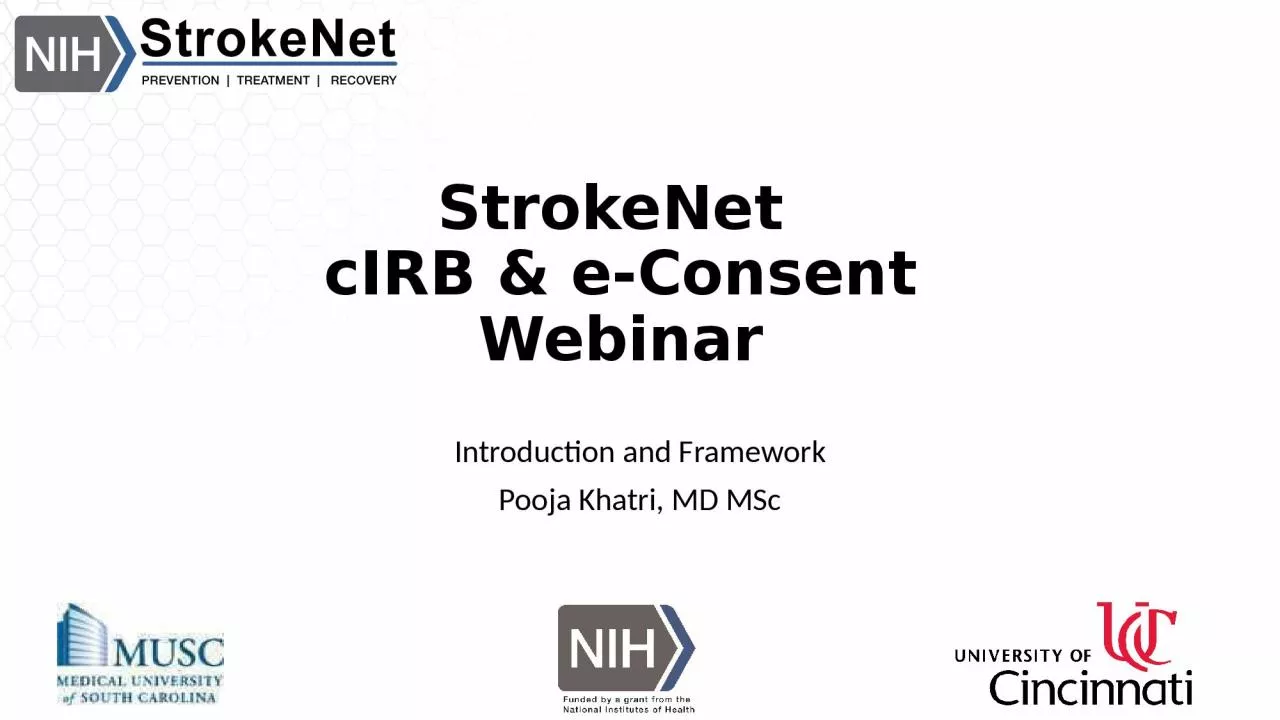PPT-StrokeNet cIRB & e-Consent
Author : bency | Published Date : 2024-02-02
Webinar Introduction and Framework Pooja Khatri MD MSc Welcome Local IRB and HRPP officials PIs and Coordinators RCC Satellite Trial Why now COVID19 increases urgency
Presentation Embed Code
Download Presentation
Download Presentation The PPT/PDF document "StrokeNet cIRB & e-Consent" is the property of its rightful owner. Permission is granted to download and print the materials on this website for personal, non-commercial use only, and to display it on your personal computer provided you do not modify the materials and that you retain all copyright notices contained in the materials. By downloading content from our website, you accept the terms of this agreement.
StrokeNet cIRB & e-Consent: Transcript
Download Rules Of Document
"StrokeNet cIRB & e-Consent"The content belongs to its owner. You may download and print it for personal use, without modification, and keep all copyright notices. By downloading, you agree to these terms.
Related Documents














